Welcome to SatelliteDish.com >> CLNB’s – PLL Commercial
>> PLL – Commercial:Wikipedia
Phase locked Loop (PLL) Commercial LNB–Wikipedia
First of all to even qualify to be called a PLL (Phased Lock Looped) LNB–Wikipedia it must have a Stability factor of +plus or -minus 100Khz (+-100Khz ) or lower. It’s not only the degrees kelvin (Noise Temp. 15k,20k ect..) Where the known rule is the lower the degree noise k temp the better. PLL LNBs have a noise temp factor of 20k or 25k but they still blow the crap out of any inexpensive backyard 17k or 15k LNB. It is because a backyard 15k LNB has a stability factor of +-1000Khz. So try not to pay much attention to the lower the noise “K” temp the better. It’s good and sometimes true but also more important is the LNB’s stability factor. +-Khz. The lower the stability factor the better and probably the more expensive. The LO (Local Oscillator) stability-Wikipedia LNB: (Low Noise Block Down converter) An LNA and block down converter enclosed in a single housing. The output of an LNB is an IF signal at L-Band [nominally 950 to 1450 MHz].
Low Noise Block (LNBs) LNB–Wikipedia External Reference – Wideband – Extended – LNA–Wikipedia
Norsat
Norsat Phase locked Loop (PLL) Commercial LNBs. Norsat offers a wide range of BUCs, SSPAs, LNBs, LNAs, BDCs, and microwave components that can be customized to meet your specific requirements. Down converter: A device that takes a block of frequency and converts it to a lower frequency. The lower the noise temperature, the better the performance. DRO: (Dielectric Resonator or Dielectrically Stabilized Oscillator) Highly stable oscillator circuit employed by LNBs. Ku-Band Ka-Band C-Band and X-Band-Wikipedia
C-Band LNB–Wikipedia
Showing all 35 results
-
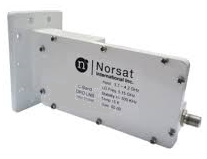
Norsat 3220 C-Band PLL LNB
$239.98Add to cartThe Norsat 3220 C-Band PLL LNB is one of Norsat’s many premium quality C-Band LNBs. It is a preferred LNB for many C-Band applic...
-

Norsat 3120 C-Band PLL LNB
$369.99Add to cartThe The Norsat 3120 C-Band PLL LNB is Norsat’s premium quality C-Band LNB. The preferred LNB for all C-Band applications.Input F...
-
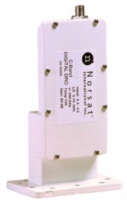
Norsat 3215 C-Band PLL LNB
$289.98Add to cartThe 3000 Series is Norsat’s premium quality C-Band LNB. The preferred LNB for all C-Band applications. Input Frequency: 3.4 R...
-

Norsat 3115 C-Band PLL LNB
$339.98Add to cartNorsat 3115 High Stability PLL LNB. The 3000 Series is Norsat’s premium quality C-Band LNB. The preferred LNB for all C-Band app...
-

Norsat 3225 C-Band PLL LNB
$189.98Add to cartNorsat 3225 C-Band PLL LNB. The 3000 Series is Norsat’s premium quality C-Band LNB. The preferred LNB for all C-Band application...
-

Norsat 3125 C-Band PLL LNB
$249.98Add to cartNorsat 3125 C-Band PLL LNB. The 3000 Series is Norsat’s premium quality C-Band LNB. The preferred LNB for all C-Band application...
-
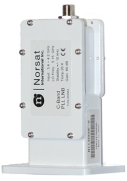
Norsat 3230 C-Band PLL LNB
$179.98Add to cartNorsat 3220 C-Band PLL LNB. The 3000 Series is Norsat’s premium quality C-Band LNB. The preferred LNB for all C-Band application...
-

Norsat 3130 C-Band PLL LNB
$189.98Add to cartNorsat 3130 C-Band PLL LNB. The 3000 Series is Norsat’s premium quality C-Band LNB. The preferred LNB for all C-Band application...
-

Norsat 3420 C-Band PLL LNB
$289.98Add to cartNorsat 3420 C-Band PLL LNB. The 3000 Series is Norsat’s premium quality C-Band LNB. The preferred LNB for all C-Band application...
-

Norsat 3425 C-Band PLL LNB
$299.98Add to cartNorsat 3425 C-Band PLL LNB. The 3000 Series is Norsat’s premium quality C-Band LNB. The preferred LNB for all C-Band application...
-

Norsat 3430 C-Band PLL LNB
$369.98Add to cartNorsat 3430 C-Band PLL LNB. The 3000 Series is Norsat’s premium quality C-Band LNB. The preferred LNB for all C-Band application...
-

Norsat 3520 C-Band PLL LNB
$239.98Add to cartNorsat 3520 C-Band PLL LNB. The 3000 Series is Norsat’s premium quality C-Band LNB. The preferred LNB for all C-Band application...
-

Norsat 3525 C-Band PLL LNB
$279.98Add to cartNorsat 3525 C-Band PLL LNB. The 3000 Series is Norsat’s premium quality C-Band LNB. The preferred LNB for all C-Band application...
-

Norsat 3530 C-Band PLL LNB
$239.98Add to cartNorsat 3530 C-Band PLL LNB. The 3000 Series is Norsat’s premium quality C-Band LNB. The preferred LNB for all C-Band application...
-

Norsat 3620 C-Band PLL LNB
$399.98Add to cartNorsat 3620 C-Band PLL LNB. The 3000 Series is Norsat’s premium quality C-Band LNB. The preferred LNB for all C-Band application...
-

Norsat 3625 C-Band PLL LNB
$369.00Add to cartNorsat 3625 C-Band PLL LNB. The 3000 Series is Norsat’s premium quality C-Band LNB. The preferred LNB for all C-Band application...
-

Norsat 3820 C-Band PLL LNB
$359.89Add to cartNorsat 3820 C-Band PLL LNB. The 3000 Series is Norsat’s premium quality C-Band LNB. The preferred LNB for all C-Band application...
-

Norsat 3825 C-Band PLL LNB
$349.00Add to cartNorsat 3825 C-Band PLL LNB. The 3000 Series is Norsat’s premium quality C-Band LNB. The preferred LNB for all C-Band application...
-

Norsat 3830 C-Band PLL LNB
$295.00Add to cartNorsat 3830 C-Band PLL LNB. The 3000 Series is Norsat’s premium quality C-Band LNB. The preferred LNB for all C-Band application...
-

Norsat 5100 C-Band PLL LNB
$169.99Add to cartNorsat 5100 C-Band PLL LNB. Ideal for DVB (Digital Video Broadcast), VSAT Broadband, Military Satcom, Point-of-Sale, and Oil and Gas a...
-

Norsat 5100R C-Band PLL LNB
Read moreNorsat 5100 C-Band PLL LNB. Ideal for DVB (Digital Video Broadcast), VSAT Broadband, Military Satcom, Point-of-Sale, and Oil and Gas a...
-

Norsat 5100RN C-Band PLL LNB
Read moreNorsat 5100 C-Band PLL LNB. Ideal for DVB (Digital Video Broadcast), VSAT Broadband, Military Satcom, Point-of-Sale, and Oil and Gas a...
-

Norsat 5100i Extended C-Band PLL LNB
$159.00Add to cartNorsat 5100i C-Band PLL LNB. Ideal for DVB (Digital Video Broadcast), VSAT Broadband, Military Satcom, Point-of-Sale, and Oil and Gas ...
-

Norsat 5150i Extended C-Band PLL LNB
$139.99Add to cartNorsat 5150i C-Band PLL LNB. Ideal for DVB (Digital Video Broadcast), VSAT Broadband, Military Satcom, Point-of-Sale, and Oil and Gas ...
-

Norsat 5150 C-Band PLL LNB
$149.88Add to cartNorsat 5150 C-Band PLL LNB. Ideal for DVB (Digital Video Broadcast), VSAT Broadband, Military Satcom, Point-of-Sale, and Oil and Gas a...
-

Norsat 5150R C-Band PLL LNB
Read moreNorsat 5150 C-Band PLL LNB. Ideal for DVB (Digital Video Broadcast), VSAT Broadband, Military Satcom, Point-of-Sale, and Oil and Gas a...
-

Norsat 5250 C-Band PLL LNB
$155.00Add to cartNorsat 5250 C-Band PLL LNB. Ideal for DVB (Digital Video Broadcast), VSAT Broadband, Military Satcom, Point-of-Sale, and Oil and Gas a...
-

Norsat 5250R C-Band PLL LNB
Read moreNorsat 5250 C-Band PLL LNB. Ideal for DVB (Digital Video Broadcast), VSAT Broadband, Military Satcom, Point-of-Sale, and Oil and Gas a...
-

Norsat 5250i Extended C-Band PLL LNB
$159.98Add to cartNorsat 5250i C-Band PLL LNB. Ideal for DVB (Digital Video Broadcast), VSAT Broadband, Military Satcom, Point-of-Sale, and Oil and Gas ...
-

Norsat 5500 C-Band PLL LNB
$209.98Add to cartNorsat 5500 C-Band PLL LNB. Ideal for DVB (Digital Video Broadcast), VSAT Broadband, Military Satcom, Point-of-Sale, and Oil and Gas a...
-

Norsat 5500R C-Band PLL LNB
Read moreNorsat 5500 C-Band PLL LNB. Ideal for DVB (Digital Video Broadcast), VSAT Broadband, Military Satcom, Point-of-Sale, and Oil and Gas a...
-

Norsat 5500i Extended C-Band PLL LNB
$239.98Add to cartNorsat 5500i C-Band PLL LNB. Ideal for DVB (Digital Video Broadcast), VSAT Broadband, Military Satcom, Point-of-Sale, and Oil and Gas ...
-

Norsat 5700 C-Band PLL LNB
$225.00Add to cartNorsat 5700 C-Band PLL LNB. Ideal for DVB (Digital Video Broadcast), VSAT Broadband, Military Satcom, Point-of-Sale, and Oil and Gas a...
-

Norsat 5700R C-Band PLL LNB
Read moreNorsat 5700 C-Band PLL LNB. Ideal for DVB (Digital Video Broadcast), VSAT Broadband, Military Satcom, Point-of-Sale, and Oil and Gas a...
-

Norsat 5700i Extended C-Band PLL LNB
$229.98Add to cartNorsat 5700i C-Band PLL LNB. Ideal for DVB (Digital Video Broadcast), VSAT Broadband, Military Satcom, Point-of-Sale, and Oil and Gas ...
Showing all 35 results
C-Band External Reference and Extended LNB
The benefit of using an external reference PLL LNB is that the indoor reference oscillator is easier to maintain at a stable constant temperature. Some LNBs operate at such high frequency that they can need phase look loop frequency control. An internal PLL uses a crystal oscillator in the LNB. An external reference PLL uses a 10 MHz reference supply from the customer’s indoor modem or receiver.
C-Band LNB–Wikipedia
Showing all 4 results
-

Norsat 3020X-2 C-Band External Reference PLL LNB
$749.00Add to cartNorsat 3020x-2 Phase Locked to External Reference C-Band PLL LNB. Ideal for DVB (Digital Video Broadcast), VSAT Broadband, Military Sa...
-

Norsat 3020X C-Band External Reference PLL LNB
Read moreNorsat 3020x-2 Phase Locked to External Reference C-Band PLL LNB. Ideal for DVB (Digital Video Broadcast), VSAT Broadband, Military Sa...
-

Norsat 3025X C-Band External Reference PLL LNB
$449.99Add to cartNorsat 3025X Phase Locked to External Reference C-Band PLL LNB. Ideal for DVB (Digital Video Broadcast), VSAT Broadband, Military Satc...
-

External Reference PLL LNB Norsat 3030X C-Band
$369.98Add to cartNorsat 3030X Phase Locked to External Reference C-Band PLL LNB. Ideal for DVB (Digital Video Broadcast), VSAT Broadband, Military Satc...
Showing all 4 results
Ku-Band LNB–Wikipedia
L.O. Frequency (Local Oscillator Frequency) The frequency setting of the oscillator used in the LNB that is used as the bases for the down conversion to the L-Band output frequency. The Local oscillator frequency is added or subtracted from the input frequency to obtain the output frequency.
Showing all 37 results
-
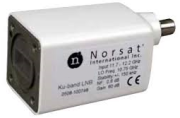
Norsat HS1046A Ku-Band PLL LNB
$465.00Add to cartNorsat HS1046A Ku-Band (11.70-12.20 GHz) PLL LNB. – L.O. Stability: +/-4 kHz. – Noise Figure: 0.6 dB. – Output Conne...
-

Norsat 1106HA Ku-Band PLL LNB
$339.98Add to cartThe Norsat 1000H Series LNBs offer excellent PLL Stability and Phase Noise performance in a compact package. The 1000H Series LNB is d...
-
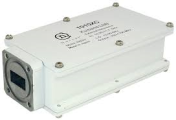
Norsat 1107HA Ku-Band PLL LNB
$249.98Add to cartNorsat Low Noise Blocks (LNBs) provide signal reception for satellite communications around the world. The Norsat 1107HA offers premiu...
-

Norsat 1107HB Ku-Band PLL LNB
$259.98Add to cartThe Norsat 1000H Series LNBs offer excellent PLL Stability and Phase Noise performance in a compact package. The 1000H Series LNB is d...
-

Norsat 1107HC Ku-Band PLL LNB
$265.98Add to cartThe Norsat 1107HC Ku-Band PLL LNB offers excellent PLL Stability and Phase Noise performance in a compact package. The Norsat 1107HC K...
-
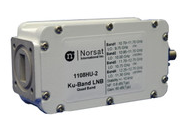
Norsat 1107HEF Ku-Band (10.95 – 12.75 GHz) PLL LNB
$2,200.00Add to cartNorsat Low Noise Blocks (LNBs) provide signal reception for satellite communications around the world. The Norsat 1107HEF offers premi...
-

Norsat 1108HA Ku-Band PLL LNB
$249.98Add to cartNorsat Low Noise Blocks (LNBs) provide signal reception for satellite communications around the world. The Norsat 1108HA offers premiu...
-

Norsat 1108HB Ku-Band PLL LNB
$379.00Add to cartThe Norsat 1000H Series LNBs offer excellent PLL Stability and Phase Noise performance in a compact package. The 1000H Series LNB is d...
-
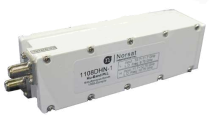
Norsat Norsat 1108DH-1 Simultaneous Frequency Ku-Band PLL LNB
$1,799.98Add to cart1108DH-1 Norsat 2 Simultaneous Ku-Bands – Low Band: 10.7 – 11.7 GHz and High Band: 11.7 – 12.75 GHz Series LNBs offe...
-

Norsat Norsat 1108DH-2 Simultaneous Frequency Ku-Band PLL LNB
$1,995.98Add to cart1108DH-2 Norsat 2 Simultaneous Ku-Bands – Low Band: 10.95 – 11.7 GHz and High Band: 11.7 – 12.75 GHz Series LNBs off...
-

Norsat 1108HUF-2 Quad-Band Ku-PLL LNB
$859.98Add to cart1108HUF-2 Quad-Band PLL LNB Series LNBs offer excellent PLL Stability and Phase Noise performance in a compact package. The 1000H Seri...
-

Norsat 1109HB Ku-Band PLL LNB
$265.98Add to cartThe Norsat 1000H Series LNBs offer excellent PLL Stability and Phase Noise performance in a compact package. The 1000H Series LNB is d...
-
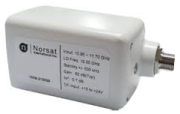
Norsat 1109HBF Ku-Band PLL LNB
$369.00Add to cartThe Norsat 1000H Series LNBs offer excellent PLL Stability and Phase Noise performance in a compact package. The 1000H Series LNB is d...
-

Norsat 1109HCF Ku-Band PLL LNB
$349.98Add to cartThe Norsat 1000H Series LNBs offer excellent PLL Stability and Phase Noise performance in a compact package. The 1000H Series LNB is d...
-
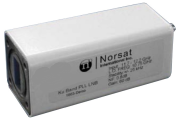
Norsat 1206HAF Ku-Band PLL LNB
$489.98Add to cartThe Norsat 1000H Series LNBs offer excellent PLL Stability and Phase Noise performance in a compact package. The 1000H Series LNB is d...
-

Norsat 1207HA Ku-Band PLL LNB
$259.98Add to cartThe Norsat 1000H Series LNBs offer excellent PLL Stability and Phase Noise performance in a compact package. The 1000H Series LNB is d...
-

Norsat 1207HB Ku-Band PLL LNB
$299.98Add to cartThe Norsat 1000H Series LNBs offer excellent PLL Stability and Phase Noise performance in a compact package. The 1000H Series LNB is d...
-

Norsat 1208HA Ku-Band PLL LNB
$255.00Add to cartThe Norsat 1000H Series LNBs offer excellent PLL Stability and Phase Noise performance in a compact package. The 1000H Series LNB is d...
-

Norsat 1208HB Ku-Band PLL LNB
$369.00Add to cartThe Norsat 1000H Series LNBs offer excellent PLL Stability and Phase Noise performance in a compact package. The 1000H Series LNB is d...
-

Norsat 1208HC Ku-Band PLL LNB
$365.00Add to cartThe Norsat 1000H Series LNBs offer excellent PLL Stability and Phase Noise performance in a compact package. The 1000H Series LNB is d...
-

Norsat 1208HU Ku-Band PLL LNB
$1,598.98Add to cartThe Norsat 1000H Series LNBs offer excellent PLL Stability and Phase Noise performance in a compact package. The 1000H Series LNB is d...
-

Norsat 1208DH-1 Simultaneous Frequency Ku-Band PLL LNB
$2,295.00Add to cartThe Norsat 1000H Series LNBs offer excellent PLL Stability and Phase Noise performance in a compact package. The 1000H Series LNB is d...
-

Norsat 1208DH-2 Simultaneous Frequency Ku-Band PLL LNB
$2,395.00Add to cartThe Norsat 1000H Series LNBs offer excellent PLL Stability and Phase Noise performance in a compact package. The 1000H Series LNB is d...
-

Norsat 1209HA Ku-Band PLL LNB
$249.00Add to cartThe Norsat 1000H Series LNBs offer excellent PLL Stability and Phase Noise performance in a compact package. The 1000H Series LNB is d...
-

Norsat 1209HB Ku-Band PLL LNB
$269.98Add to cartThe Norsat 1000H Series LNBs offer excellent PLL Stability and Phase Noise performance in a compact package. The 1000H Series LNB is d...
-

Norsat 1209HC Ku-Band PLL LNB
$269.00Add to cartThe Norsat 1000H Series LNBs offer excellent PLL Stability and Phase Noise performance in a compact package. The 1000H Series LNB is d...
-

Norsat 1507HA Ku-Band PLL LNB
$269.00Add to cartInput Frequency: 11.7 – 12.2 GHz. L.O. Stability: +/- 5 kHz. Noise Figure 0.7 dB. Output Connector: Type F Female. LO Frequency:...
-

Norsat HS1057A Ku-Band PLL LNB
$349.00Add to cartThe Norsat 1000H Series LNBs offer excellent PLL Stability and Phase Noise performance in a compact package. The 1000H Series LNB is d...
-

Norsat HS1057A Ku-Band PLL LNB
Read moreThe Norsat 1000H Series LNBs offer excellent PLL Stability and Phase Noise performance in a compact package. The 1000H Series LNB is d...
-

Norsat 15007LA Ku-Band PLL LNB
$349.98Add to cartThe 15000L series is used in critical SCPC Data transmissions, large Earth Station Applications and where equipment manufacturers requ...
-

Norsat 15007LB Ku-Band PLL LNB
$359.00Add to cartInput Frequency: 12.25-12.75 GHz L.O. Stability: +/- 5 kHz. Noise Figure 0.7 dB. Output Connector: Type F or N Female. LO Frequency: 1...
-

Norsat 15008LA Ku-Band PLL LNB
$365.00Add to cartNorsat 15008LA Ku-Band (11.70-12.20 GHz) PLL LNB. – L.O. Stability: +/-50 kHz. – Noise Figure: 0.8 dB. – Output Conn...
-

Norsat 15008LB Ku-Band PLL LNB
$365.99Add to cartThe 15000L series is used in critical SCPC Data transmissions, large Earth Station Applications and where equipment manufacturers requ...
-

Norsat 15008LC Ku-Band PLL LNB
$365.00Add to cartNorsat 15008LC Ku-Band (10.95-11.70 GHz) PLL LNB. – L.O. Stability: +/-50 kHz. – Noise Figure: 0.8 dB. – Output Conn...
-

Norsat 15009LA Ku-Band PLL LNB
$349.00Add to cartNorsat 15009LA Ku-Band (11.70-12.20 GHz) PLL LNB. The 15000L series is used in critical SCPC Data transmissions, large Earth Station A...
-

Norsat 15009LB Ku-Band PLL LNB
$369.00Add to cartNorsat 15009LB Ku-Band (12.25-12.75 GHz) PLL LNB. The 15000L series is used in critical SCPC Data transmissions, large Earth Station A...
-

Norsat 15009LC Ku-Band PLL LNB
$369.00Add to cartNorsat 15009LC Ku-Band (10.95-11.70 GHz) PLL LNB. – L.O. Stability: +/-50 kHz. – Noise Figure: 0.9 dB. – Output Conn...
Showing all 37 results
Ku-Band External Reference and Extended LNB–Wikipedia
The Norsat 1000XH Series Ku-Band Compact Ext Reference PLL LNB provides the best system BER performance and is used in applications requiring very fast data acquisition time or very low data rates. External Reference and Extended Phase locked Loop (PLL) Commercial LNB Available in custom configurations.
Ku-Band LNB–Wikipedia
Showing all 23 results
-

Norsat 1007XHC Ku-Band Compact External Reference LNB
$599.00Add to cartThe Norsat 1000XH Series Ku-Band Compact Ext Reference PLL LNB provides the best system BER performance and is used in applications re...
-

Norsat 1008XHN Ku-Band Compact External Reference LNB
Read moreNorsat 1008XHA Ku-Band (11.70 – 12.20 GHz) Compact External Reference PLL LNB. The single reliable connector supplies the 10 MHz...
-

Norsat 1008XHB Ku-Band Compact External Reference LNB
$479.00Add to cartThe single reliable connector supplies the 10 MHz Compact External Reference the DC power from the receiver and the L-Band IF signal t...
-

Norsat 1008XHC Ku-Band Compact External Reference LNB
$479.00Add to cartThe single reliable connector supplies the 10 MHz Compact External Reference the DC power from the receiver and the L-Band IF signal t...
-

Norsat 1008XB Ku-Band Compact External Reference LNB
$579.00Add to cartThe Norsat 1008XB Ku-Band (12.25-12.75 GHz) External Reference PLL LNB. – L.O. Stability: Phase Locked to External Reference. &#...
-

Norsat 1008XC Ku-Band Compact External Reference LNB
$579.00Add to cartThe Norsat 1008XC Ku-Band External Reference PLL LNB. The Norsat 1000X Series Ku-Band External Reference PLL LNB provides the best sys...
-

Norsat 1008DX-1 Simultaneous Bands Ku-Band External Reference LNB
$2,595.00Add to cartThe Norsat 1000H Series LNBs offer excellent PLL Stability and Phase Noise performance in a compact package. The 1000H Series LNB is d...
-

Norsat 1008DX-2 Simultaneous Bands Ku-Band External Reference LNB
Read moreThe Norsat 1000H Series LNBs offer excellent PLL Stability and Phase Noise performance in a compact package. The 1000H Series LNB is d...
-

Norsat 1008XU Quad-Band External Reference LNB
$1,595.00Add to cartThe Norsat 1008XU Quad-Band External Reference LNB Input Frequencies from 10.7 to 12.75 GHz. External 10 MHz Reference. 58 dB Gain. Ty...
-

Norsat 1008XU Quad-Band External Reference LNB
Read moreThe Norsat 1008XU Quad-Band External Reference LNB Input Frequencies from 10.7 to 12.75 GHz. External 10 MHz Reference. 58 dB Gain. Ty...
-

Norsat 1009XA Ku-Band External Reference LNB
$485.00Add to cartThe Norsat 1009XA Ku-Band (11.70-12.20 GHz) External Reference PLL LNB. – L.O. Stability: Phase Locked to External Reference. &#...
-

Norsat 1009XA Ku-Band External Reference LNB
Read moreThe Norsat 1009XA Ku-Band (11.70-12.20 GHz) External Reference PLL LNB. – L.O. Stability: Phase Locked to External Reference. &#...
-

Norsat 1009XA Ku-Band External Reference LNB
Read moreThe Norsat 1000XH Series Ku-Band Compact Ext Reference PLL LNB provides the best system BER performance and is used in applications re...
-

Norsat 1009XHA Ku-Band External Reference LNB
$459.00Add to cartThe Norsat 1000XH Series Ku-Band Compact Ext Reference PLL LNB provides the best system BER performance and is used in applications re...
-

Norsat 1009XBN Ku-Band External Reference LNB
Read moreNorsat 1009XHB Ku-Band (12.25-12.75 GHz) Compact External Reference PLL LNB. The Norsat 1000XH Series Ku-Band Compact Ext Reference PL...
-

Norsat 1009XHB Ku-Band External Reference LNB
$459.00Add to cartNorsat 1009XHB Ku-Band (12.25-12.75 GHz) Compact External Reference PLL LNB. The Norsat 1000XH Series Ku-Band Compact Ext Reference PL...
-

Norsat 1009XHBN Ku-Band External Reference LNB
Read moreNorsat 1009XHB Ku-Band (12.25-12.75 GHz) Compact External Reference PLL LNB. The Norsat 1000XH Series Ku-Band Compact Ext Reference PL...
-

Norsat 1009XC Ku-Band External Reference LNB
Read moreNorsat 1009XHC Ku-Band (10.95-11.70 GHz) Compact External Reference PLL LNB. The Norsat 1000XH Series Ku-Band Compact Ext Reference PL...
-

Norsat 1009XHC Ku-Band External Reference LNB
$579.00Add to cartNorsat 1009XHC Ku-Band (10.95-11.70 GHz) Compact External Reference PLL LNB. The Norsat 1000XH Series Ku-Band Compact Ext Reference PL...
-

Norsat 1009XHCN Ku-Band External Reference LNB
Read moreNorsat 1009XHC Ku-Band (10.95-11.70 GHz) Compact External Reference PLL LNB. The Norsat 1000XH Series Ku-Band Compact Ext Reference PL...
-

Norsat 1010XHA Ku-Band External Reference LNB
Read moreNorsat 1010XHB Ku-Band (10.95-11.70 GHz) Compact External Reference PLL LNB. The Norsat 1000XH Series Ku-Band Compact Ext Reference PL...
-

Norsat 1010XHB Ku-Band External Reference LNB
$599.00Add to cartNorsat 1010XHB Ku-Band (10.95-11.70 GHz) Compact External Reference PLL LNB. The Norsat 1000XH Series Ku-Band Compact Ext Reference PL...
-

Norsat 1010XHC Ku-Band External Reference LNB
Read moreNorsat 1010XHB Ku-Band (10.95-11.70 GHz) Compact External Reference PLL LNB. The Norsat 1000XH Series Ku-Band Compact Ext Reference PL...
Showing all 23 results
Ka-Band LNB–Wikipedia
The Ka band (“kay-ay band”) covers the radio frequencies of 26.5–40 GHz, i.e. wavelengths from slightly over one centimeter down to 7.5 millimeters. The Ka band is part of the K band of the microwave band of the electromagnetic spectrum. This symbol refers to “K-above”: in other words, the band directly above the K-band. The 30/20 GHz band is used in communications satellites, uplink in either the 27.5 GHz and 31 GHz bands, and high-resolution, close-range targeting radars aboard military airplanes.
Showing all 20 results
-

Norsat 9000HA-2 Ka-Band PLL LNB
$1,495.00Add to cartA Norsat 9000HA-2 Ka-Band Waveguide: WR-42 (18.20 – 19.20 GHz) PLL LNB Norsat LNBs are graded by Stability and Noise Figure to p...
-

Norsat 9000HA Ka-Band PLL LNB
Read moreA Norsat 9000HA-2 Ka-Band Waveguide: WR-42 (18.20 – 19.20 GHz) PLL LNB Norsat LNBs are graded by Stability and Noise Figure to p...
-
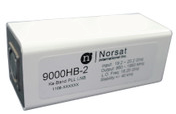
Norsat 9000HB-2 Ka-Band PLL LNB
$1,595.00Add to cartA Norsat LNBs are graded by Stability and Noise Figure to provide the perfect balance between performance and cost. L.O. Frequency: 18...
-

Norsat 9000HBN-2 Ka-Band PLL LNB
Read moreA Norsat LNBs are graded by Stability and Noise Figure to provide the perfect balance between performance and cost. L.O. Frequency: 18...
-

Norsat 9000HC Ka-Band PLL LNB
Read moreNorsat 9000HC-2 Ka-Band Waveguide: WR42 (20.20 to 21.20 GHz) PLL Ka-Band LNB. A Norsat LNBs are graded by Stability and Noise Figure t...
-

Norsat 9000HC-2 Ka-Band PLL LNB
$1,795.00Add to cartNorsat 9000HC-2 Ka-Band Waveguide: WR42 (20.20 to 21.20 GHz) PLL Ka-Band LNB. A Norsat LNBs are graded by Stability and Noise Figure t...
-
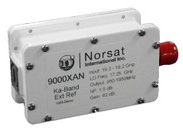
Norsat 9000XAN-4 Ka-Band External Reference PLL LNB
$999.99Add to cartA Norsat LNBs are graded by Stability and Noise Figure to provide the perfect balance between performance and cost. L.O. Stability: Ph...
-

Norsat 9000XAN Ka-Band External Reference PLL LNB
Read moreA Norsat LNBs are graded by Stability and Noise Figure to provide the perfect balance between performance and cost. L.O. Stability: Ph...
-

Norsat 9000XBN-4 Ka-Band External Reference PLL LNB
$1,199.00Add to cartA Norsat 9000XBN-4 Ka-Band (19.2 – 20.2 GHz) External Reference LNB. The Norsat LNBs are graded by Stability and Noise Figure to...
-

Norsat 9000XBN Ka-Band External Reference PLL LNB
Read moreA Norsat 9000XBN-4 Ka-Band (19.2 – 20.2 GHz) External Reference LNB. The Norsat LNBs are graded by Stability and Noise Figure to...
-

Norsat 9000XCN-4 Ka-Band External Reference PLL LNB
$1,199.00Add to cartA Norsat 9000XCN-4 Ka-Band ( 20.2 – 21.2 GHz) External Reference LNB Norsat 9000XBN-4 Ka-Band (19.2 – 20.2 GHz) External R...
-

Norsat 9000XCN Ka-Band External Reference PLL LNB
Read moreA Norsat 9000XCN-4 Ka-Band ( 20.2 – 21.2 GHz) External Reference LNB Norsat 9000XBN-4 Ka-Band (19.2 – 20.2 GHz) External R...
-

Norsat 9000HX-O3B-A Ka-Band DUO LNB
Read moreThe Norsat 9000HX-O3B-AN Ka-Band DUO LNB. Norsat LNBs are graded by Stability and Noise Figure to provide the perfect balance between ...
-

Norsat 9000HX-O3B-AN Ka-Band DUO LNB
$949.89Add to cartThe Norsat 9000HX-O3B-AN Ka-Band DUO LNB. Norsat LNBs are graded by Stability and Noise Figure to provide the perfect balance between ...
-

Norsat 9000HX-O3B-B Ka-Band DUO LNB
Read moreThe Norsat 9000HX-O3B-BN Ka-Band DUO LNB. Norsat LNBs are graded by Stability and Noise Figure to provide the perfect balance between ...
-

Norsat 9000HX-O3B-BN Ka-Band DUO LNB
$959.99Add to cartThe Norsat 9000HX-O3B-BN Ka-Band DUO LNB. Norsat LNBs are graded by Stability and Noise Figure to provide the perfect balance between ...
-

Norsat 9000HX-O3B-ABS Ka Selectable-Band LNB
$2,495.00Add to cartThe Norsat 9000HX-O3B-ABS Ka- Selectable Band LNB. Norsat’s Low Noise Blocks (LNBs) provide signal reception for satellite communica...
-

Norsat 9000HX-O3B-ABSN Ka Selectable-Band LNB
Read moreThe Norsat 9000HX-O3B-ABS Ka- Selectable Band LNB. Norsat’s Low Noise Blocks (LNBs) provide signal reception for satellite communica...
-

Norsat 9200HT-3 Ka Triple-Band PLL LNB
$3,895.00Add to cartThe Norsat 9200HT-3 Ka- Selectable Band LNB. Norsat’s Low Noise Blocks (LNBs) provide signal reception for satellite communications ...
-

Norsat 9200HT-3N Ka Triple-Band PLL LNB
Read moreThe Norsat 9200HT-3 Ka- Selectable Band LNB. Norsat’s Low Noise Blocks (LNBs) provide signal reception for satellite communications ...
Showing all 20 results
X-Band LNB–Wikipedia
The X band is a segment of the microwave radio region of the electromagnetic spectrum. In some cases, such as in communication engineering, the frequency range of the X band is rather indefinitely set at approximately 7.0 to 11.2 GHz. In radar engineering, the frequency range is specified by the IEEE at 8.0 to 12.0 GHz.
Showing all 4 results
-
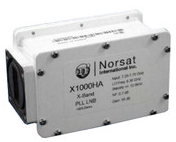
Norsat X1000HA X-Band LNB
$1,599.00Add to cartA Norsat X-Band LNB graded by Stability and Noise Figure to provide the perfect balance between performance and cost. Input Frequency:...
-

Norsat X1000HAN X-Band LNB
Read moreA Norsat X-Band LNB graded by Stability and Noise Figure to provide the perfect balance between performance and cost. Input Frequency:...
-
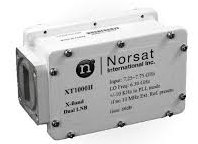
Norsat XT1000 X-Band External Reference LNB
$1,795.00Add to cartX-Band XT1000 External Reference Norsat LNB are graded by Stability and Noise Figure to provide the perfect balance between performanc...
-

Norsat XT1000N X-Band External Reference LNB
Read moreX-Band XT1000 External Reference Norsat LNB are graded by Stability and Noise Figure to provide the perfect balance between performanc...
Showing all 4 results
Swedish Microwave
Professional LNBs, LNAs, BDCs, TLTs and RF over Fiber products for demanding applications in VSAT. Typical applications and solutions include VSAT, SNG, Cable-TV head ends, Marine VSAT, HTS, SOTM, Teleports, Earth Observation / Remote Sensing and more. Our C-Bands LNBs have integrated filters to minimize unwanted signals such as WiMAX and 5G. Available as single band or 2-band switchable, full C-band covering LNBs and BDCs.
C-Band LNB–Wikipedia
Showing all 4 results
-
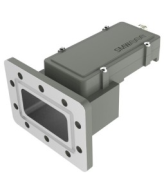
C-Band PLL LNB
Read moreC-Band PLL LNB has a unique design with integrated filters to isolate interfering signals (WiMAX etc.). The LNB comes either with inte...
-

C-Band 2-Band PLL LNB
Read moreC-Band PLL LNB has a unique design with integrated filters to isolate interfering signals (WiMAX etc.). The LNB comes either with inte...
-
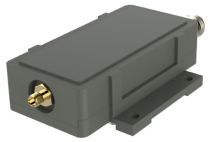
C-Band BDC (Block Down Converter)
Read moreThe C-Band PLL block down converter is intended for receiving C-Band transmissions within the frequency range 3.4 to 4.8 GHz. Fixed ga...
-

C-Band BDC (Block Down Converter) – Monitoring TX
Read moreThe C-Band PLL block down converter is intended for receiving C-Band transmissions within the frequency range 3.4 to 4.8 GHz. Fixed ga...
Showing all 4 results
Ku-Band LNB–Wikipedia
L.O. Frequency (Local Oscillator Frequency) The frequency setting of the oscillator used in the LNB that is used as the bases for the down conversion to the L-Band output frequency. The Local oscillator frequency is added or subtracted from the input frequency to obtain the output frequency.
Showing all 13 results
-
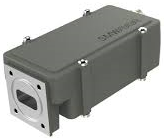
Ku-Band PLL LNB
Read moreThe SMW ku LNB is available with either internal high LO stability or external 10 MHz reference. The professional PLL has a new design...
-

Ku Low High Band PLL LNB
Read moreThe SMW ku LNB is available with either internal high LO stability or external 10 MHz reference. The professional PLL has a new design...
-

Ku-Band Wideband PLL LNB
Read moreThe SMW ku LNB is available with either internal high LO stability or external 10 MHz reference. The professional PLL has a new design...
-
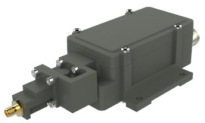
Ku-Band BDC (Block Down Converter)
Read moreThe Ku-band BDC bock down converter has a selection of several frequency bands. The Multi-band BDC can be remotely switched across 2-4...
-

Ku-Band Multi-band BDC (Block Down Converter)
Read moreThe Ku-band BDC bock down converter has a selection of several frequency bands. The Multi-band BDC can be remotely switched across 2-4...
-
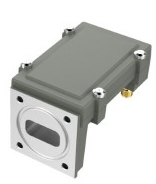
Ku-Band LNA SMA
Read moreAll LNA (Low Noise Amplifier) units are individually tuned for the very best performance available. Quality and long term reliability ...
-

Ku-Band LNA N
Read moreAll LNA (Low Noise Amplifier) units are individually tuned for the very best performance available. Quality and long term reliability ...
-

Ku-Band LNA F Systems
Read moreAll LNA (Low Noise Amplifier) units are individually tuned for the very best performance available. Quality and long term reliability ...
-
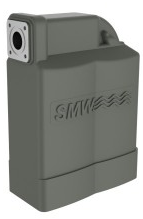
Ku-Band Quattro LNB
Read moreThe Quattro PLL LNB consists of two Dual PLL LNB’s mounted on an orthomode transducer (OMT) protected under a plastic cover. The LNB...
-

Ku-Band Quattro DRO LNB
Read moreThe Quattro PLL LNB consists of two Dual PLL LNB’s mounted on an orthomode transducer (OMT) protected under a plastic cover. The LNB...
-

Ku-Band Quad Systems LNB
Read moreThe Quattro PLL LNB consists of two Dual PLL LNB’s mounted on an orthomode transducer (OMT) protected under a plastic cover. The LNB...
-
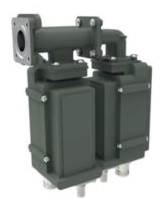
Dual Fiber Output Ku-Band PLL LNB
Read moreHighest RF and optical performance. Single frequency conversion and directly modulated DFB lasers. Results in best possible performanc...
-
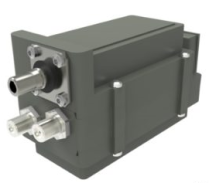
Quattro Fiber Optic Output Ku PLL LNB
Read moreThe Ka-band Fiber PLL LNB is a Quad Ku PLL LNB. The Highest RF and optical performance Single frequency conversion and directly modula...
Showing all 13 results
Ka-Band LNB–Wikipedia
Professional Ka-Band satellite Low Noise Block Down converters and LNA products. Full KA-band frequency covering Quad LNA-BDC systems are unique SMW product enabling simultaneous reception of the entire Ka-band with four normal L-band outputs. Also available are single- and 2- band switchable LNBs and BDCs, including models with O3b approval. All single units are rigorous tested for long lasting performance. Very low phase noise. Options include customized LO, customized gain, separate DC power input and separate input for the external 10 MHz reference. Our products cover KA band frequency 17.30-22.30 GHz. Other frequency bands–Wikipedia
Showing all 9 results
-

Ka-Band PLL LNB
Read moreC-Band PLL LNB has a unique design with integrated filters to isolate interfering signals (WiMAX etc.). The LNB comes either with inte...
-

Ka-Band 2-Band PLL LNB
Read moreC-Band PLL LNB has a unique design with integrated filters to isolate interfering signals (WiMAX etc.). The LNB comes either with inte...
-

Ka-Band Quad PLL LNB
Read moreC-Band PLL LNB has a unique design with integrated filters to isolate interfering signals (WiMAX etc.). The LNB comes either with inte...
-

Ka-Band BDC (Block Down Converter)
Read moreThe Ka-Band BDC single BDC that covers the wide frequency range 17.3-22.2 GHz with several sub bands and LO frequencies. The BDC has a...
-

Ka-Band 2-Band BDC (Block Down Converter)
Read moreThe Ka-Band BDC single BDC that covers the wide frequency range 17.3-22.2 GHz with several sub bands and LO frequencies. The BDC has a...
-
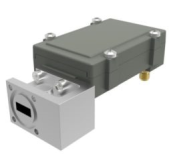
Ka-WideBand LNA SMA(Dual Output)
Read moreThe SMW Waveguide Ka-Band LNA covers 17.30-22.30 GHz and has two SMA-connector outputs. Separate DC SMA connector. Low input VSWR with...
-

Ka-WideBand LNA N(Dual Output)
Read moreThe SMW Waveguide Ka-Band LNA covers 17.30-22.30 GHz and has two SMA-connector outputs. Separate DC SMA connector. Low input VSWR with...
-

Ka-WideBand LNA F Systems (Dual Output)
Read moreThe SMW Waveguide Ka-Band LNA covers 17.30-22.30 GHz and has two SMA-connector outputs. Separate DC SMA connector. Low input VSWR with...
-
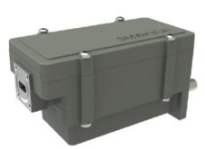
Fiber Optic Output Ka-Band PLL LNB
Read moreThe Ka-band Fiber PLL LNB is a single-band LNB covering the wide frequency range 17.3-22.2 GHz with several sub bands and LO frequenci...
Showing all 9 results
X-Band LNB–Wikipedia
X-Band products for Professional satellite communications. State of the art X-band offering includes LNB and BDC models in compact housings for both normal receive frequencies and transmit monitoring. The products cover 7.25-8,40 GHz. All our units are individually hand tuned for the very best performance available. Outstanding performance includes very low phase noise and very high stability over temperature and time. Special models for Earth Observation are available. Other frequency bandss- Wikipedia Approximately 7.0 to 11.2 GHz. In radar engineering.
X-Band LNB
Showing all 5 results
-

X-Band VSAT LNB
$2,195.00Add to cartThe professional X-Band PLL LNB comes standard with Low Phase Noise to meet DVB-S2X Professional services. The LNB features VERY LOW i...
-

X-Band SNG LNB
$2,195.00Add to cartThe professional X-Band PLL LNB comes standard with Low Phase Noise to meet DVB-S2X Professional services. The LNB features VERY LOW i...
-

X-Band LNB Earth Observation
$2,195.00Add to cartThe professional X-Band PLL LNB is optimized for Earth Observation and remote sensing technical requirements. It reduces cost and comp...
-

X-Band BDC (Block Down Converter)
Read moreThe X-Band PLL block down converter covers X-band within the frequency range 7.25 to 7.75 GHz. Fixed gain between 0 dB and 55 dB. The ...
-

Fiber output X-Band LNB
Read moreThe professional X-Band PLL fiber LNB gives improvement when distance between LNB and receiver becomes too long for traditional coaxia...
Showing all 5 results
Teledyne Paradise Datacom–Wikipedia
WR-75 Flange / wave guide “F” type “N” Type C-120, WR-42, WR-62, WR-75, WR-112 Standard Ku LNB LNBF Liner Polarity Ku-Band 11.7 -12.2 GHz Output = 950-1450 MHz Universal Ku LNB = Liner Polarity Ku-Band Low = 9.75 GHz / norm= 10.7 – 11.70 GHz High = 10.6 / norm = 11.7 – 12.75 GHz 10.7 – 12.75 GHz. Output = 950-1950 MHz 1100-2150 MHz Ku-Band Variants and other LNBs / LNBFs ODDBALL wideband output ranges. Output = 950 – 1700 MHz & Misc. BROADBAND.
LNB Redundant LNB Systems
Showing all 8 results
-
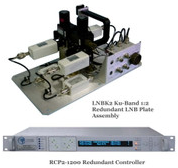
C-Band Teledyne Paradise Datacom CBand 1:1 Redundant LNB System
$14,945.00Add to cartThe LNB Series Low Noise Block Down Converter Systems provide the ultimate system reliability by providing complete back up operation....
-

Ku-Band Teledyne Paradise Datacom Ku-Band 1:1 Redundant LNB or LNA System
$15,995.00Add to cartThe LNB Series Low Noise Block Down Converter Systems provide the ultimate system reliability by providing complete back up operation....
-

Ka-Band Teledyne Paradise Datacom 1:1 Redundant LNB System
$21,170.95Add to cartThe LNB Series Low Noise Block Down Converter Systems provide the ultimate system reliability by providing complete back up operation....
-

X-Band Teledyne Paradise Datacom Ka-Band 1:1 Redundant LNB System
$22,195.95Add to cartThe LNB Series Low Noise Block Down Converter Systems provide the ultimate system reliability by providing complete back up operation....
-

C-Band Teledyne Paradise Datacom C-Band 1:2/3 Redundant LNB System
$27,000.00Add to cartThe LNB Series Low Noise Block Down Converter Systems provide the ultimate system reliability by providing complete back up operation....
-

Ku-Band Teledyne Paradise Datacom Ku-Band 1:2/3 Redundant LNB or LNA System
$28,950.00Add to cartThe LNB Series Low Noise Block Down Converter Systems provide the ultimate system reliability by providing complete back up operation....
-

C-Band Teledyne Paradise Datacom C-Band 1:2 Redundant LNB System
$17,995.00Add to cartThe LNB Series Low Noise Block Down Converter Systems provide the ultimate system reliability by providing complete back up operation....
-

Ku-Band Teledyne Paradise Datacom Ku-Band 1:2 Redundant LNB System
$18,850.00Add to cartThe LNB Series Low Noise Block Down Converter Systems provide the ultimate system reliability by providing complete back up operation....
Showing all 8 results
New Japan Radio
The abbreviation LNB stands for Low Noise Block. It is the device on the front of a satellite dish that receives the very low level microwave signal from the satellite, amplifies it, changes the signals to a lower frequency band and sends them down the cable to the indoor receiver.
C-Band LNB–Wikipedia
Showing all 8 results
-
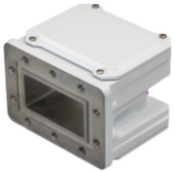
NJRC NJS8486H C-Band PLL LNB
$279.99Add to cartThe New Japan Radio NJS8486H C-Band (3.4 – 4.2 GHz) PLL LNB. Local Stability: ±51.5 kHz. Noise Temperature: 15° K. typical 30�...
-

NJRC NJS8486HN C-Band PLL LNB
Read moreThe New Japan Radio NJS8486H C-Band (3.4 – 4.2 GHz) PLL LNB. Local Stability: ±51.5 kHz. Noise Temperature: 15° K. typical 30�...
-

NJRC NJS8486S Palapa C-Band PLL LNB
$319.00Add to cartNJRC NJS8486S Palapa C-Band (3.4-4.2 GHz) PLL LNB The New Japan Radio NJS8486H C-Band (3.4 – 4.2 GHz) PLL LNB. Local Stability: ...
-

NJRC NJS8486SN Palapa C-Band PLL LNB
Read moreNJRC NJS8486S Palapa C-Band (3.4-4.2 GHz) PLL LNB The New Japan Radio NJS8486H C-Band (3.4 – 4.2 GHz) PLL LNB. Local Stability: ...
-
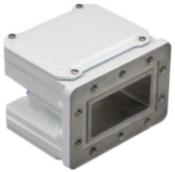
NJRC NJS8487S Palapa C-Band PLL LNB
$324.00Add to cartNJRC NJS8487SN C-Band PLL LNB L.O. Stability: ±15 kHz New Japan Radio has been the premier manufacturer of quality LNBs for years. Th...
-

NJRC NJS8487SN Palapa C-Band PLL LNB
Read moreNJRC NJS8487SN C-Band PLL LNB L.O. Stability: ±15 kHz New Japan Radio has been the premier manufacturer of quality LNBs for years. Th...
-

NJRC NJS8487H C-Band PLL LNB
$239.98Add to cartThe New Japan Radio NJS8486H C-Band (3.4 – 4.2 GHz) PLL LNB. Local Stability: ±51.5 kHz. Noise Temperature: 15° K. typical 30�...
-

NJRC NJS8487HN C-Band PLL LNB
Read moreThe New Japan Radio NJS8486H C-Band (3.4 – 4.2 GHz) PLL LNB. Local Stability: ±51.5 kHz. Noise Temperature: 15° K. typical 30�...
Showing all 8 results
C-Band External Reference and Extended LNB
External reference: The signal that is supplied to an LNB via the center conductor of the IF cable. The reference frequency is normally 10 MHz and is used to accurately phase lock the conversion oscillator in the LNB to the wanted frequency.
Showing all 6 results
-
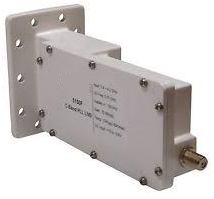
NJRC NJS8486E Extended C-Band External Reference PLL LNB
$449.00Add to cartNJRC NJS8486E Extended C-Band External Reference PLL LNB New Japan Radio has been the premier manufacturer of quality LNBs for years. ...
-

NJRC NJS8486EN Extended C-Band External Reference PLL LNB
Read moreNJRC NJS8486E Extended C-Band External Reference PLL LNB New Japan Radio has been the premier manufacturer of quality LNBs for years. ...
-

NJRC NJS8487E C-Band External Reference PLL LNB
$399.00Add to cartNJRC NJS8487E C-Band External Reference PLL LNB New Japan Radio has been the premier manufacturer of quality LNBs for years. The NJS84...
-

NJRC NJS8487EN C-Band External Reference PLL LNB
Read moreNJRC NJS8487E C-Band External Reference PLL LNB New Japan Radio has been the premier manufacturer of quality LNBs for years. The NJS84...
-

NJS8488E Extended C-Band External Reference PLL LNB
Read moreNJRC NJS8488E Extended C-Band External Reference PLL LNB New Japan Radio has been the premier manufacturer of quality LNBs for years. ...
-

NJS8488EN Extended C-Band External Reference PLL LNB
Read moreNJRC NJS8488E Extended C-Band External Reference PLL LNB New Japan Radio has been the premier manufacturer of quality LNBs for years. ...
Showing all 6 results
Ku-Band LNB–Wikipedia
The expression low noise refers the the quality of the first stage input amplifier transistor. The quality is measured in units called Noise Temperature, Noise Figure or Noise Factor. Both Noise Figure and Noise Factor may be converted into Noise Temperature. The lower the Noise Temperature the better. So an LNB with Noise Temperature = 100K is twice as good as one with 200K. C band LNBs tend have the lowest noise temperature performance while Ka LNBs have the highest (worst).
Showing all 32 results
-
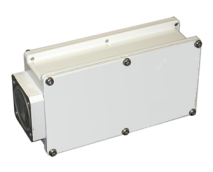
NJR2835H Ku-Band PLL LNB
$199.00Add to cartNJRC NJR2835H Ku-Band PLL LNB NJRC New Japan Radio has been the premier manufacturer of quality LNBs for years. Input Frequency: 11.70...
-

NJR2835S Ku-Band PLL LNB
Read moreNJRC NJR2835SN Ku-Band PLL LNB 11.7 – 12.2 GHz, Int Ref +/- 3 ppm Type-N Out. These low-cost, high-quality PLL LNBs from New Jap...
-

NJR2835SN Ku-Band PLL LNB
$269.00Add to cartNJRC NJR2835SN Ku-Band PLL LNB 11.7 – 12.2 GHz, Int Ref +/- 3 ppm Type-N Out. These low-cost, high-quality PLL LNBs from New Jap...
-
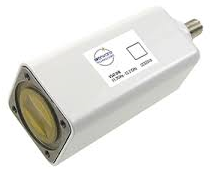
NJR2835U Ku-Band PLL LNB
$259.00Add to cartNew Japan Radio NJR2835U Ku-Band (11.70-12.20 GHz) PLL LNB. Local Stability: +/- 10.75 kHz (Ta.:-40 to +60C) Noise Figure: 0.8 dB. Out...
-

NJR2835UN Ku-Band PLL LNB
Read moreNew Japan Radio NJR2835U Ku-Band (11.70-12.20 GHz) PLL LNB. Local Stability: +/- 10.75 kHz (Ta.:-40 to +60C) Noise Figure: 0.8 dB. Out...
-

NJR2836H Ku-Band PLL LNB
$239.98Add to cartNJRC NJR2836H Ku-Band PLL LNB NJRC New Japan Radio has been the premier manufacturer of quality LNBs for years. These low-cost, high-q...
-

NJR2836SN Ku-Band PLL LNB
$489.00Add to cartNew Japan Radio NJRC NJR2836SN Ku-Band PLL LNB New Japan Radio has been the premier manufacturer of quality LNBs for years. These low-...
-

NJR2836S Ku-Band PLL LNB
Read moreNew Japan Radio NJRC NJR2836SN Ku-Band PLL LNB New Japan Radio has been the premier manufacturer of quality LNBs for years. These low-...
-

NJR2836U Ku-Band PLL LNB
$465.00Add to cartNew Japan Radio NJRC NJR2836U Ku-Band PLL LNB New Japan Radio has been the premier manufacturer of quality LNBs for years. RF Frequenc...
-

NJR2836UN Ku-Band PLL LNB
Read moreNew Japan Radio NJRC NJR2836U Ku-Band PLL LNB New Japan Radio has been the premier manufacturer of quality LNBs for years. RF Frequenc...
-

NJR2837H Ku-Band PLL LNB
$239.98Add to cartNJRC NJR2837H Ku-Band PLL LNB NJRC New Japan Radio has been the premier manufacturer of quality LNBs for years. These low-cost, high-q...
-

NJR2837S Ku-Band PLL LNB
$265.98Add to cartNew Japan Radio NJRC NJR2837S Ku-Band PLL LNB New Japan Radio has been the premier manufacturer of quality LNBs for years. These low-c...
-

NJR2837SN Ku-Band PLL LNB
Read moreNew Japan Radio NJRC NJR2837S Ku-Band PLL LNB New Japan Radio has been the premier manufacturer of quality LNBs for years. These low-c...
-

NJR2837U Ku-Band PLL LNB
$269.95Add to cartNew Japan Radio NJRC NJR2837U Ku-Band PLL LNB New Japan Radio has been the premier manufacturer of quality LNBs for years. RF Frequenc...
-

NJR2837UN Ku-Band PLL LNB
Read moreNew Japan Radio NJRC NJR2837U Ku-Band PLL LNB New Japan Radio has been the premier manufacturer of quality LNBs for years. RF Frequenc...
-

NJR2839H Ku-Band PLL LNB
$239.00Add to cartNJRC NJR2839H Ku-Band PLL LNB NJRC New Japan Radio has been the premier manufacturer of quality LNBs for years. These low-cost, high-q...
-

NJR2839S Ku-Band PLL LNB
$299.00Add to cartNew Japan Radio NJRC NJR2839S Ku-Band PLL LNB New Japan Radio has been the premier manufacturer of quality LNBs for years. These low-c...
-

NJR2839SN Ku-Band PLL LNB
Read moreNew Japan Radio NJRC NJR2839S Ku-Band PLL LNB New Japan Radio has been the premier manufacturer of quality LNBs for years. These low-c...
-

NJR2839U Ku-Band PLL LNB
$475.00Add to cartNew Japan Radio NJRC NJR2839U Ku-Band PLL LNB New Japan Radio has been the premier manufacturer of quality LNBs for years. RF Frequenc...
-

NJR2839UN Ku-Band PLL LNB
Read moreNew Japan Radio NJRC NJR2839U Ku-Band PLL LNB New Japan Radio has been the premier manufacturer of quality LNBs for years. RF Frequenc...
-
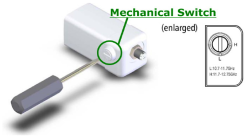
NJR2841S Ku-Band 2LO PLL LNB
$299.00Add to cartNew Japan Radio NJRC NJR2841S Switchable Local Ku-Band PLL LNB New Japan Radio has been the premier manufacturer of quality LNBs for y...
-

NJR2841SN Ku-Band 2LO PLL LNB
Read moreNew Japan Radio NJRC NJR2841S Switchable Local Ku-Band PLL LNB New Japan Radio has been the premier manufacturer of quality LNBs for y...
-

NJR2841H Universal Ku-Band 2LO Switchable PLL LNB
$265.00Add to cartInput Frequencies: 10.70 – 11.70 GHz / 11.70 – 12.75 GHz New Japan Radio NJRC NJR2841H Ku-Band PLL LNB New Japan Radio has...
-

NJR2841HN Universal Ku-Band 2LO Switchable PLL LNB
Read moreInput Frequencies: 10.70 – 11.70 GHz / 11.70 – 12.75 GHz New Japan Radio NJRC NJR2841H Ku-Band PLL LNB New Japan Radio has...
-

NJR2841L Universal Ku-Band 2LO Switchable PLL LNB
$239.98Add to cartFull Ku-Band Coverage New Japan Radio NJRC NJR2841L Ku-Band PLL LNB New Japan Radio has been the premier manufacturer of quality LNBs ...
-

NJR2841LN Universal Ku-Band 2LO Switchable PLL LNB
Read moreFull Ku-Band Coverage New Japan Radio NJRC NJR2841L Ku-Band PLL LNB New Japan Radio has been the premier manufacturer of quality LNBs ...
-

NJR2842A3 Universal Ku-Band 2LO PLL LNB
$199.00Add to cartUniversal Ku Coverage New Japan Radio NJRC NJR28412A3 Ku-Band PLL LNB New Japan Radio has been the premier manufacturer of quality LNB...
-

NJR2842A3N Universal Ku-Band 2LO PLL LNB
Read moreUniversal Ku Coverage New Japan Radio NJRC NJR28412A3 Ku-Band PLL LNB New Japan Radio has been the premier manufacturer of quality LNB...
-

NJR2843H Universal Ku-Band 2LO PLL LNB
$234.00Add to cartNew Japan Radio NJRC NJR2843H Ku-Band PLL LNB New Japan Radio has been the premier manufacturer of quality LNBs for years. Frequencies...
-

NJR2843HN Universal Ku-Band 2LO PLL LNB
Read moreNew Japan Radio NJRC NJR2843H Ku-Band PLL LNB New Japan Radio has been the premier manufacturer of quality LNBs for years. Frequencies...
-

NJR2843E Universal Ku-Band 2LO PLL LNB
$539.00Add to cartExternally Referenced Switchable New Japan Radio NJRC NJR2843EN Ku-Band PLL LNB New Japan Radio has been the premier manufacturer of q...
-

NJR2843EN Universal Ku-Band 2LO PLL LNB
Read moreExternally Referenced Switchable New Japan Radio NJRC NJR2843EN Ku-Band PLL LNB New Japan Radio has been the premier manufacturer of q...
Showing all 32 results
Ku-Band External Reference and Extended LNB
The benefit of using an external reference PLL LNB is that the indoor reference oscillator is easier to maintain at a stable constant temperature. Some LNBs operate at such high frequency that they can need phase look loop frequency control. An internal PLL uses a crystal oscillator in the LNB. An external reference PLL uses a 10 MHz reference supply from the customer’s indoor modem or receiver.
Ku-Band LNB–Wikipedia
Showing all 10 results
-

NJR2934E Ku-Band External Reference PLL LNB
$439.00Add to cartExternally Referenced New Japan Radio NJRC NJR2934E Ku-Band PLL LNB New Japan Radio has been the premier manufacturer of quality LNBs ...
-

NJR2934EN Ku-Band External Reference PLL LNB
Read moreExternally Referenced New Japan Radio NJRC NJR2934E Ku-Band PLL LNB New Japan Radio has been the premier manufacturer of quality LNBs ...
-

NJR2935E Ku-Band External Reference PLL LNB
$419.99Add to cartExternally Referenced New Japan Radio NJRC NJR2935E Ku-Band PLL LNB New Japan Radio has been the premier manufacturer of quality LNBs ...
-

NJR2935EN Ku-Band External Reference PLL LNB
Read moreExternally Referenced New Japan Radio NJRC NJR2935E Ku-Band PLL LNB New Japan Radio has been the premier manufacturer of quality LNBs ...
-

NJR2936E Ku-Band External Reference PLL LNB
$429.00Add to cartExternally Referenced New Japan Radio NJRC NJR2936E Ku-Band PLL LNB New Japan Radio has been the premier manufacturer of quality LNBs ...
-

NJR2936EN Ku-Band External Reference PLL LNB
Read moreExternally Referenced New Japan Radio NJRC NJR2936E Ku-Band PLL LNB New Japan Radio has been the premier manufacturer of quality LNBs ...
-

NJR2937E Ku-Band External Reference PLL LNB
$329.00Add to cartExternally Referenced New Japan Radio NJRC NJR2937E Ku-Band PLL LNB New Japan Radio has been the premier manufacturer of quality LNBs ...
-

NJR2937EN Ku-Band External Reference PLL LNB
Read moreExternally Referenced New Japan Radio NJRC NJR2937E Ku-Band PLL LNB New Japan Radio has been the premier manufacturer of quality LNBs ...
-

NJR2939E Ku-Band External Reference PLL LNB
$399.00Add to cartExternally Referenced New Japan Radio NJRC NJR2939E Ku-Band PLL LNB New Japan Radio has been the premier manufacturer of quality LNBs ...
-

NJR2939N Ku-Band External Reference PLL LNB
Read moreExternally Referenced New Japan Radio NJRC NJR2939E Ku-Band PLL LNB New Japan Radio has been the premier manufacturer of quality LNBs ...
Showing all 10 results
Ka-Band LNB–Wikipedia
VSWR: (Voltage Standing Wave Ratio) Can best be described as waves coming into the L.O. Frequency shore from the ocean. Desirable VSWR waves come in smoothly and the energy used in the LNB that is used as the bases for the down conversion to the L-Band is dissipated into the sand. This desirable VSWR is called “primary incident” and results in a low VSWR. L.O. Stability: (Local Oscillator Frequency Stability) The variance in the frequency of the Local oscillator with time, temperature, voltage, humidity or vibration.
Showing all 4 results
-

NJRC NJR2828H Ka-Band PLL LNB
$489.00Add to cartThe New Japan Radio NJR2828H Ka-Band PLL LNB comes in a weatherized housing for outdoor use. The unit down converts Ka-Band RF (18.372...
-

NJRC NJR2828HF Ka-Band PLL LNB
Read moreThe New Japan Radio NJR2828H Ka-Band PLL LNB comes in a weatherized housing for outdoor use. The unit down converts Ka-Band RF (18.372...
-

NJRC NJR2828L Ka-Band PLL LNB
$459.00Add to cartThe New Japan Radio NJR2828 Ka-Band PLL LNB comes in a weatherized housing for outdoor use. The unit down converts Ka-Band RF (17.852 ...
-

NJRC NJR2828LF Ka-Band PLL LNB
Read moreThe New Japan Radio NJR2828 Ka-Band PLL LNB comes in a weatherized housing for outdoor use. The unit down converts Ka-Band RF (17.852 ...
Showing all 4 results
 iDirect Ku LNB–Wikipedia
iDirect Ku LNB–Wikipedia
Evolution Platform – iDirect’s Evolution LNBs support DVB-S2 with Adaptive Coding and Modulation (ACM), a bandwidth-efficient technology for networks with larger outbound capacity requirements. The iDirect portfolio of advanced BUCs and LNBs is specifically tailored around the capabilities of iNFINITI® and Evolution® satellite routers, creating synergies that deliver increased flexibility, efficiency, and convenience through genuine innovations in ODU design and manufacturing.
Showing all 4 results
-
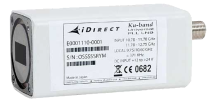
iDirect DiSEqC 22 kHz Universal Ku-Band PLL LNB
$229.00Add to cartiDirect’s DiSEqC 22 kHz Universal Ku-band PLL LNBs are highly stable low-noise block converters with superior phase noise performanc...
-

iDirect DiSEqC 22 kHz Universal Ku-Band PLL LNB
Read moreiDirect’s DiSEqC 22 kHz Universal Ku-band PLL LNBs are highly stable low-noise block converters with superior phase noise performanc...
-

iDirect Manual Switch Universal Ku-Band PLL LNB
$499.98Add to cartThe Manual Switch Universal Ku-band PLL LNB is a premium quality low-noise block converter. The iDirect portfolio of advanced BUCs and...
-

iDirect Manual Switch Universal Ku-Band PLL LNB
Read moreThe Manual Switch Universal Ku-band PLL LNB is a premium quality low-noise block converter. The iDirect portfolio of advanced BUCs and...
Showing all 4 results
 California Amplifier
California Amplifier
At CalAmp, we understand your performance demands for high stability and phase locked LNBs can be extreme, so we make sure our testing procedures are even more so. Our complete line of C & Ku Band high stability and PLL LNBs are available in a variety of frequency ranges and LO stability options.
C-Band LNB–Wikipedia
Showing all 6 results
-
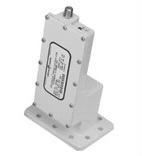
CALAMP C-Band PLL LNB
$259.00Add to cartLNB, C BAND PLL +/- 20 KHZ, 20 deg. 3.4 – 4.2GHz We understand your performance demands for high stability and phase locked LNBs...
-

Extended C-Band PLL LNB
$379.99Add to cartLNB, C BAND PLL +/- 5 KHZ, 20 deg. 3.4 – 5.15 GHzHigh stability and phase locked LNBs can be extreme, so we make sure our testin...
-
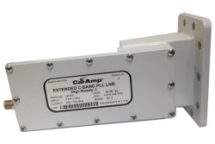
CalAmp 140194 High Stability & Phase Locked C-Band LNB
$279.98Add to cartCalifornia Amplifier PLL LNB CalAmp 140194 High Stability & Phase Locked C-Band PLL LNB ±12 KHz Stability 20° Noise Temperature...
-
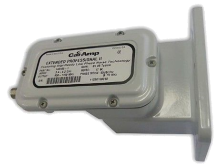
CalAmp 140105 High Stability & Phase Locked C-Band LNB
$139.98Add to cartCalifornia Amplifier PLL LNB CalAmp 140105 High Stability & Phase Locked C-Band DRO LNB ±12 KHz Stability 20° Noise Temperature...
-
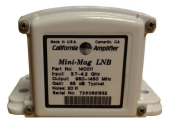
CALAMP C-Band PLL LNB
$259.00Add to cartLNB, C BAND PLL +/- 20 KHZ, 20 deg. 3.4 – 4.2GHz We understand your performance demands for high stability and phase locked LNBs...
-

CALAMP C-Band PLL LNB
$259.00Add to cartLNB, C BAND PLL +/- 20 KHZ, 20 deg. 3.4 – 4.2GHz We understand your performance demands for high stability and phase locked LNBs...
Showing all 6 results
Ku-Band LNB–Wikipedia
The expression low noise refers the the quality of the first stage input amplifier transistor. The quality is measured in units called Noise Temperature, Noise Figure or Noise Factor. Both Noise Figure and Noise Factor may be converted into Noise Temperature. The lower the Noise Temperature the better. So an LNB with Noise Temperature = 100K is twice as good as one with 200K. C band LNBs tend have the lowest noise temperature performance while Ka LNBs have the highest (worst).
Showing all 3 results
-
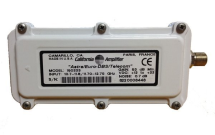
KU PLL +/- 25KHZ, .9DB, 11.7-12.2 GHz
$229.99Add to cartWe understand your performance demands for high stability and phase locked LNBs can be extreme, so we make sure our testing procedures...
-

KU PLL +/- 25KHZ, 1.0DB, 11.7-12.75 GHz
$229.99Add to cartWe understand your performance demands for high stability and phase locked LNBs can be extreme, so we make sure our testing procedures...
-
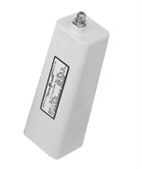
KU PLL +/- 10KHZ, .9DB, 10.7-12.75 GHz
$1,279.99Add to cartWe understand your performance demands for high stability and phase locked LNBs can be extreme, so we make sure our testing procedures...
Showing all 3 results
Miscellaneous–Wikipedia
LNA – A low-noise amplifier (LNA) is an electronic amplifier that amplifies a very low-power signal without significantly degrading its signal-to-noise ratio. An amplifier increases the power of both the signal and the noise present at its input. The LNB is a combination of low-noise amplifier, frequency mixer, local oscillator and intermediate frequency (IF) amplifier. It receives the microwave signal from the satellite collected by the dish, amplifies it, and downconverts the block of frequencies to a lower block of intermediate frequencies (IF). This downconversion allows the signal to be carried to the indoor satellite TV receiver using relatively cheap coaxial cable
Block Down Converter – Low Noise Amp–Wikipedia
Showing 1–12 of 14 results
-
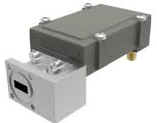
C-Band Block Down Converter
Read moreC-Band BDC (single) BDC 1:1 C-Band Redundant BDC Systems-BRC-1101 Series 1:2 C-Band Redundant – BDC Systems LNB, KU/PLL +/-25KHZ...
-

Ku-Band Block Down Converter
Read moreKu-Band BDC (single) BDC 1:1 Ku-Band Redundant BDC Systems-BRK-1101 Series 1:2 Ku-Band Redundant BDC Systems LNB, KU/PLL +/-25KHZ .8DB...
-

LNA – Low Noise Amplifiers – L-Band LL-1500 Series
Read moreLNB, KU/PLL +/-25KHZ .8DB, 10.95-12.75GH Lower Noise configuration Stability KHz Leakage dBm Max Image Rejection dBc Min Local...
-

LNA – Low Noise Redundant Amplifiers – L-Band LRL-1100 Series
Read moreLNB, KU/PLL +/-25KHZ .8DB, 10.95-12.75GH Lower Noise configuration Stability KHz Leakage dBm Max Image Rejection dBc Min Local...
-

C-Band LNA LC-4000 Series
Read moreLNB, KU/PLL +/-25KHZ .8DB, 10.95-12.75GH Lower Noise configuration Stability KHz Leakage dBm Max Image Rejection dBc Min Local...
-

C-Band Redundant LNA LRC-1000 Series
Read moreLNB, KU/PLL +/-25KHZ .8DB, 10.95-12.75GH Lower Noise configuration Stability KHz Leakage dBm Max Image Rejection dBc Min Local...
-

S-Band LNA LL-1500 Series Single Thread
Read moreLNB, KU/PLL +/-25KHZ .8DB, 10.95-12.75GH Lower Noise configuration Stability KHz Leakage dBm Max Image Rejection dBc Min Local...
-

S-Band LNA LS-2200 Series Single Thread
Read moreLNB, KU/PLL +/-25KHZ .8DB, 10.95-12.75GH Lower Noise configuration Stability KHz Leakage dBm Max Image Rejection dBc Min Local...
-

X-Band LNA Single Thread LXA-7500 Series
Read moreLNB, KU/PLL +/-25KHZ .8DB, 10.95-12.75GH Lower Noise configuration Stability KHz Leakage dBm Max Image Rejection dBc Min Local...
-

X-Band LNA Single Thread Redundant XA-7500 Series
Read moreLNB, KU/PLL +/-25KHZ .8DB, 10.95-12.75GH Lower Noise configuration Stability KHz Leakage dBm Max Image Rejection dBc Min Local...
-

Ku-Band LNA Single Thread LK-12000 Series
Read moreLNB, KU/PLL +/-25KHZ .8DB, 10.95-12.75GH Lower Noise configuration Stability KHz Leakage dBm Max Image Rejection dBc Min Local...
-

Ku-Band LNA Redundant K-1000 Series
Read moreLNB, KU/PLL +/-25KHZ .8DB, 10.95-12.75GH Lower Noise configuration Stability KHz Leakage dBm Max Image Rejection dBc Min Local...
Showing 1–12 of 14 results




